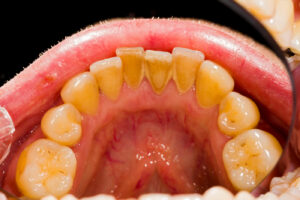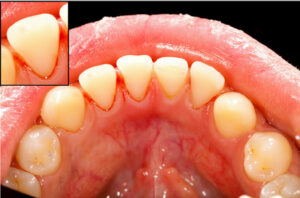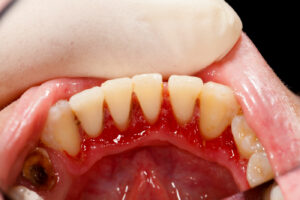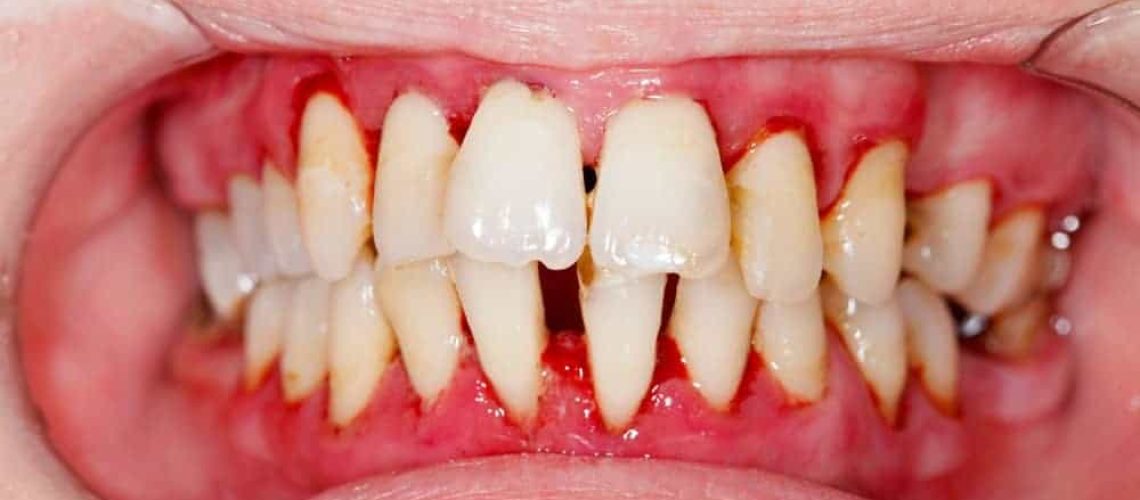If you’re starting to suffer from the tell-tale signs of gum disease, you’re probably wondering how to treat gum disease and more importantly—is it even curable to begin with?
The short answer is: it depends.
What Is Gum Disease, Exactly?
 Gum disease, often called periodontitis, gingivitis and periodontal disease, is when the gum tissue becomes chronically inflamed due to plaque and tartar build up near the gum line.
Gum disease, often called periodontitis, gingivitis and periodontal disease, is when the gum tissue becomes chronically inflamed due to plaque and tartar build up near the gum line.
There is a lot of terminology surrounding gum disease, so let’s define these terms:
- Gum disease – A disease affecting the gums as a result of plaque.
- Periodontal disease – Synonymous with “gum disease”.
- Gingivitis – The early stage of gum disease.
- Periodontitis – The advanced stage of gum disease.
Stages of Gum Disease
Gingivitis
 The first stage of gum disease is called gingivitis, which is curable—often without even the need to see a dentist!
The first stage of gum disease is called gingivitis, which is curable—often without even the need to see a dentist!
The gums become inflamed as a natural defense mechanism against plaque, which is acidic and full of bacteria.
Early on, gum disease may not be painful, and the only sign you’ll notice is excessive amounts of blood when you brush.
However, as time goes on, symptoms such as pain when chewing and brushing, noticeable gum discoloration (usually bright red) and persistent bad breath.
It’s important to have discipline and stick to a strict oral health routine when this happens, because you can cure gum disease by making some simple decisions. Brushing, flossing and using mouthwash twice per day is crucial. The symptoms of gingivitis may continue for a few weeks, but eventually this boost in oral care should ensure it subsides on its own.
There are of course plenty of dental clinics that can expedite this process with professional gum and teeth cleaning techniques.
Periodontitis
 It is so important to properly treat and reverse gingivitis, because if you don’t, it will eventually develop into periodontitis—which is not curable.
It is so important to properly treat and reverse gingivitis, because if you don’t, it will eventually develop into periodontitis—which is not curable.
Periodontitis can be seen as severe gum disease that causes the gums to pull away from the teeth (gum recession), creating deep pockets that can fill with plaque and bacteria.
The symptoms of this advanced gum disease include intense gum pain, sensitive teeth, bad breath, red and swollen gums, bleeding gums, receding gums, toothache and loose teeth.
If you are experiencing any of these symptoms, it’s important to see your dentist as soon as possible. Left untreated, periodontitis will lead to bone loss in the jaw and even tooth loss.
There is currently no cure for periodontitis, but there are treatments available that can stop the disease from progressing. These treatments include oral antibiotics, scaling and root planing (deep cleaning at the tooth root), and surgery. Soft tissue grafts may be necessary to make the gums healthy enough to eat with again.
How To Avoid Gum Disease
The best way to avoid gum disease is to practice good oral hygiene. This means brushing your teeth twice a day, flossing once a day and using mouthwash.
You should also visit your dentist for regular checkups and cleanings. If you have periodontitis, your dentist will develop a treatment plan to help you get the disease under control.
If you are at high risk for developing gum disease, your dentist may recommend that you take antibiotics or other medications to help prevent gum disease from happening.






